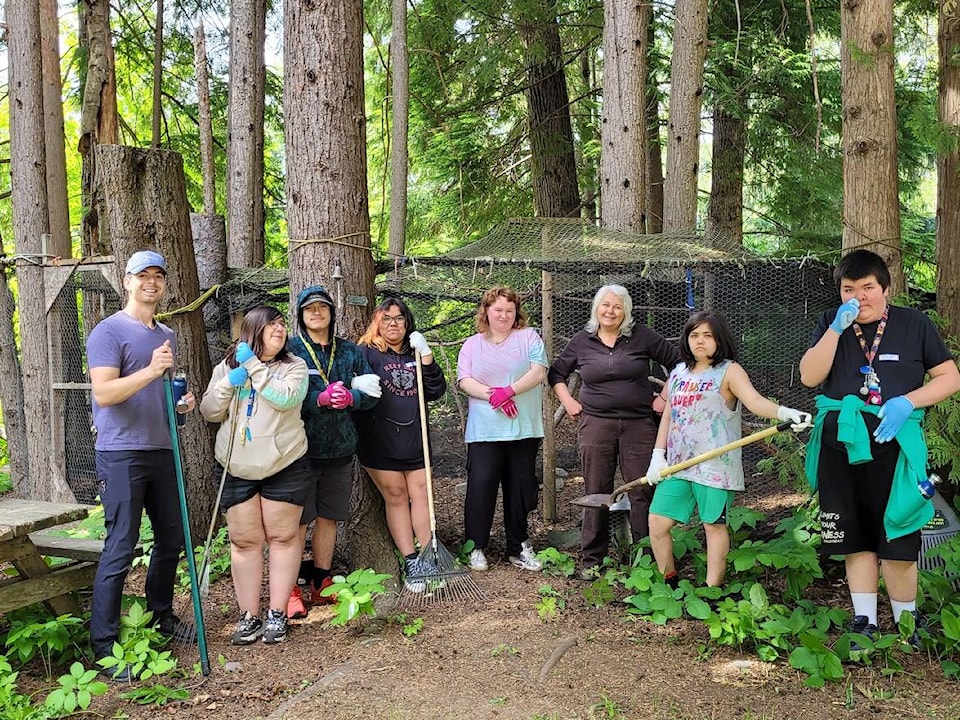Students from Caledonia’s Secondary School’s completion program recently spent a day cleaning up and doing maintenance at a local wildlife rescue sanctuary, an occasion which also gave them a chance to learn more about its work.
The idea behind the May 29 work-bee came from completion program education assistant Lynn Peerless who also works and volunteers at the Terrace Raven and Crow Rehabilitation Sanctuary.
“The students thoroughly enjoyed their time at the rehab sanctuary and gained valuable work experience as they helped with cleaning and preparing the maintenance of the organization’s yard area,” said Peerless.
“Students who would not normally participate in class activities were enthusiastic and engaged.”
Participants said they look forward to volunteering again and adding to their knowledge about the need to help northwestern B.C. wildlife.
The Terrace Raven and Crow Rehabilitation Sanctuary was formed in 2019 to respond to local residents seeking assistance with wildlife and to work with other wildlife rescue groups.
“Originally, we focused on ravens and crows because they seemed to be so stigmatized – much like when people are stigmatized they end up needing a little extra attention,” said sanctuary director Trish Seal.
“I have always worked with stigmatized demographics so it was just a natural progression for that to lead what we were doing with wildlife.
“Of course we work with other species but our name will remain as it is — It kind of makes people think.”
Officially permitted through provincial wildlife and natural resources agencies, the sanctuary’s main focus is to assist wild birds to return to their natural source habitat within 24 hours.
And when that is not possible, to prevent unnecessary pain and suffering through either temporary supportive care or transfer to another facility until release is possible, said Seal.
Permitting, which came in December 2021, followed a year of training and volunteering with other wildlife rescue organizations to gain a full understanding of the work involved.
